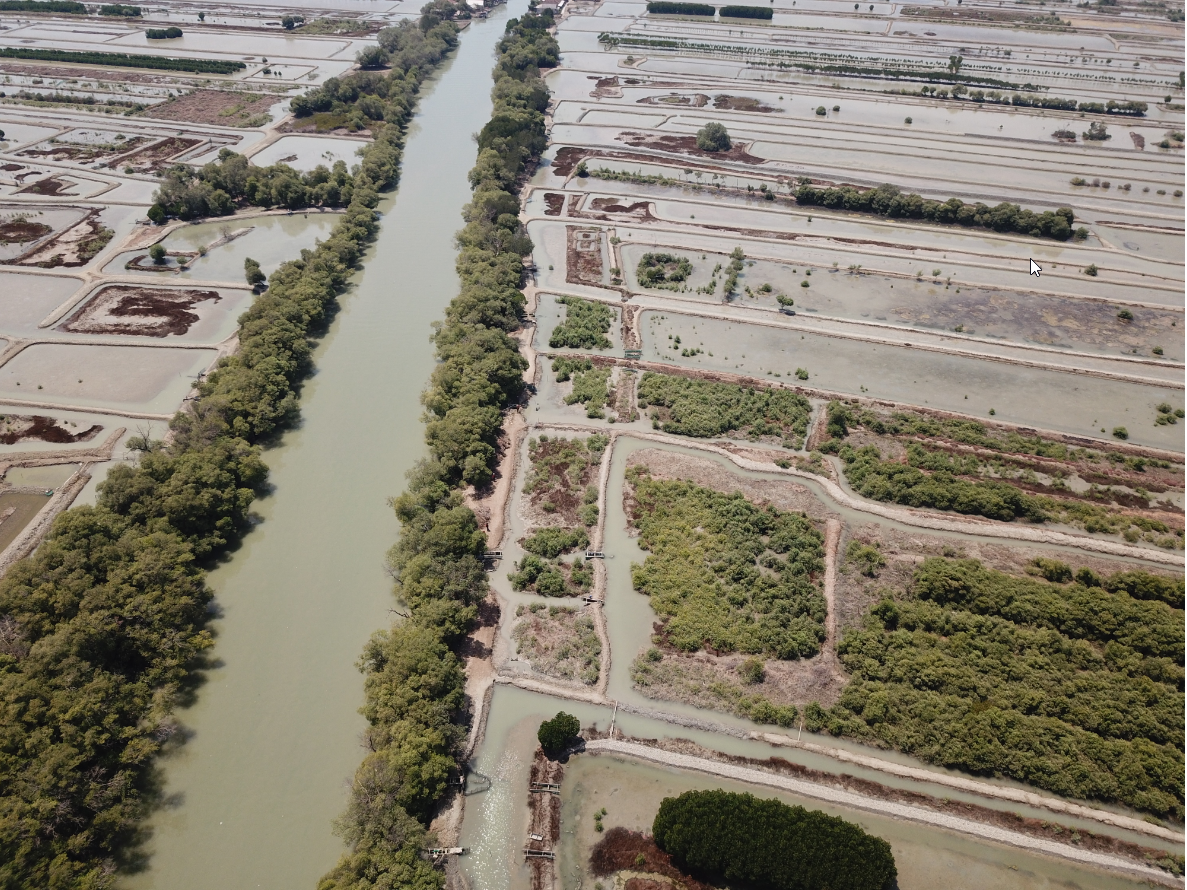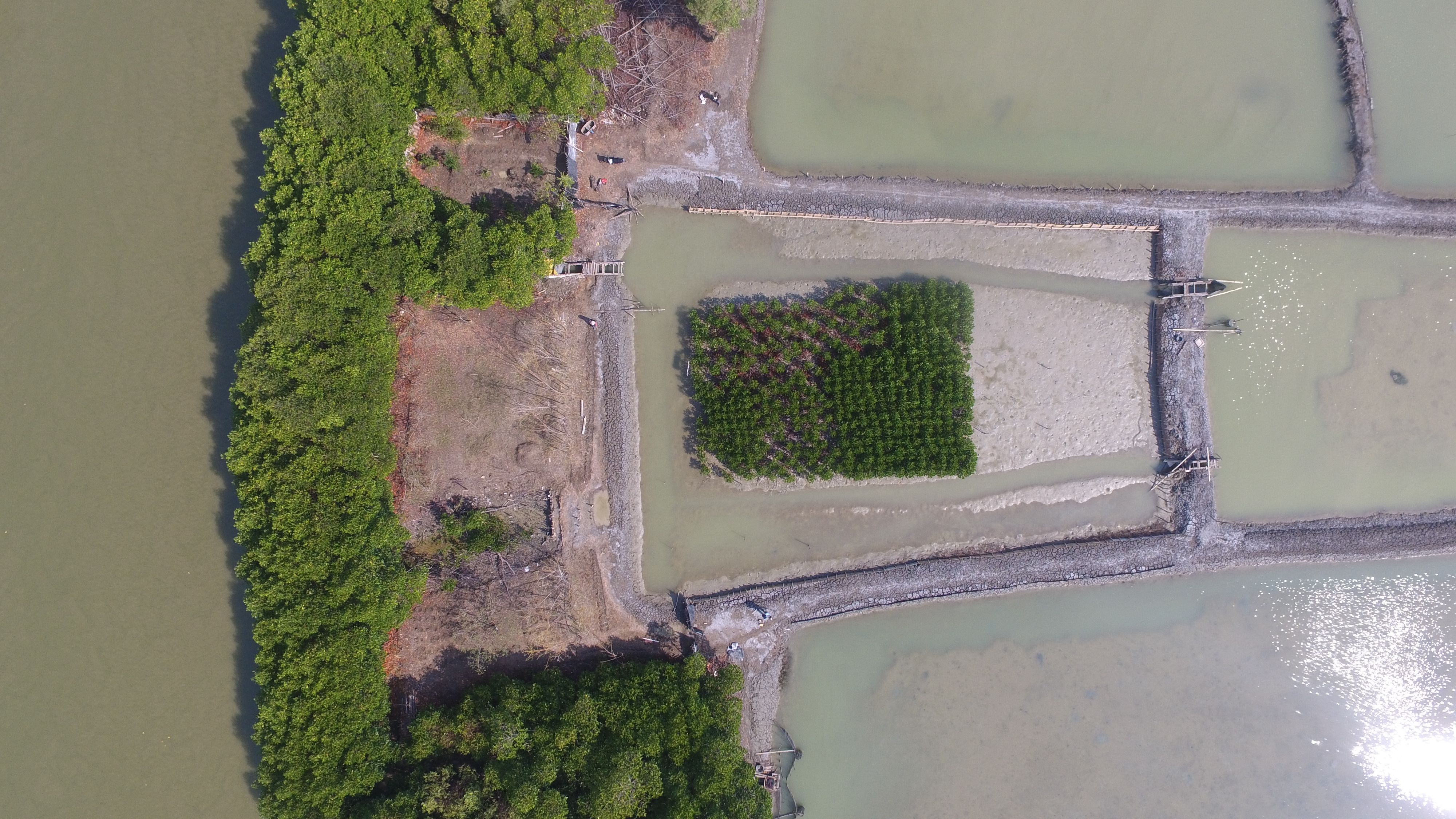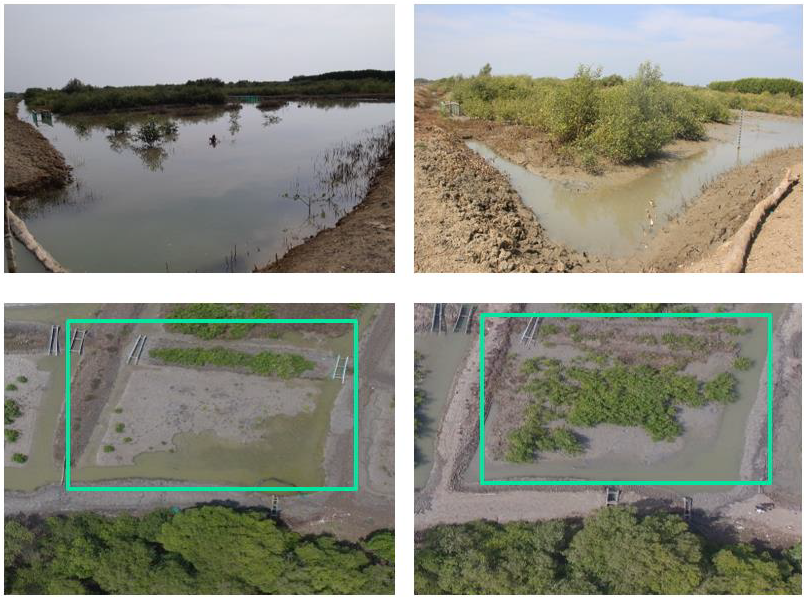



AMA connects aquaculture with mangrove greenbelts along shorelines in estuaries. Greenbelts are nonexistent in most farms. In contrast to most silvo-aquaculture systems where mangroves are planted on dykes and in ponds, in AMA they are located outside the pond, where magroves contribute to climate mitigation. Mangroves on dykes and in ponds hamper pond maintenance and their litter and shade reduce productivity. Leaves decompose in ponds, providing feed sources to shrimp and cultured organisms. However excessive litter increases ammonia levels, decreases dissolved oxygen content, and reduces pond productivity.
In AMA, the pond management is not hampered by leaves or shade, and benefits from an improved quality of inflowing water. A single farmer can practise AMA, but ideally all farmers along a canal improve the landscape. As farmers need to give up part of their pond area, which represents production potential, they are compensated with improvements in yield. Profits are obtained from the smaller pond, applying best practices from the Coastal Field Schools.
- The CFS showed pond farmers how to increase their yields using LEISA and smaller ponds. AMA farmers were able to stabilise their income, despite extreme flooding.
- AMA provides farmers with additional income through forestry products and increased catches in their gate-traps, and higher fish catches.
- In Tanakeke Island (South Sulawesi), fish farmers that gave up all or a portion of their ponds for mangrove recovery could register for a tax break (Conservation Easement).
- Farmers hesitated to remove the old dike bordering the waterway, as it limits their parcel. Leaving the old gates open most of the time was enough for a new sediment layer of 10 cm/year, and influx of seedlings for natural mangrove regrowth.
- The Bio-Rights financing mechanism and group collaboration are essential accompanying measures to recruit poor pond-farmers.
- When the pond dyke is under heavy protection or bears a large road, moving the dyke needs district planning and major investment.
- Pond dyke(s) carrying roads suitable for carts can be moved in unison by the neighbouring owners, even though this requires planning and incurs costs. Dykes with footpaths or bike roads can be moved more easily.
- Pond bunds that are shared with neighbours who are reluctant to change their system will need structural reinforcement, as the changing water level may cause erosion or uneven pressure.
- The remaining pond should have a width of 20m or more. Narrower ponds are costly to transform or become economically unviable. We advise complete transformation to the mangrove greenbelt.